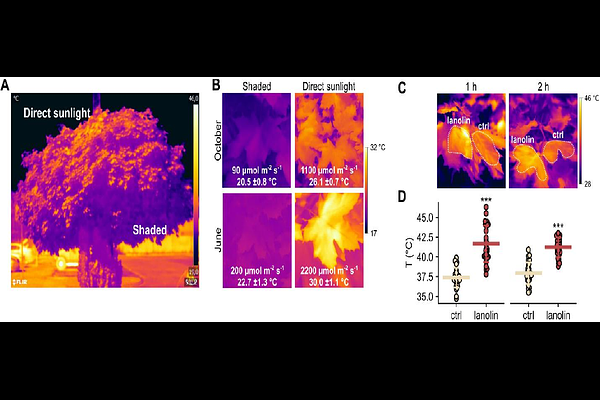Transpiration, Photoinhibition and Non-photochemical Quenching Reciprocally Control Foliar Heat Emission

Transpiration, Photoinhibition and Non-photochemical Quenching Reciprocally Control Foliar Heat Emission
Zarrin Ghalami, R.; Duszyn, M.; Kamran, M.; Burdiak, P.; Gawronski, P.; Karpinski, S.
AbstractAbstract: Global warming intensifies heat waves and drought, causing energy absorption in excess (EAE) in plants, thereby inhibiting transpiration and photosynthesis. Non-photochemical quenching (NPQ) contributes significantly to EAE dissipation as heat, with leaves emitting ca. 107 W m-2 while absorbing ca. 417 W m-2. Foliar temperature is further elevated when transpiration is inhibited, but NPQ is not increased. Surprisingly, during generic photosynthetic electron transport and NPQ partial inhibition, foliar temperature under EAE was reduced considerably. Our findings emphasize the importance of mutual co-regulation of photosynthetic electron transport, NPQ, and transpiration in foliar temperature regulation and suggest that overall heat emission from forest ecosystems may conditionally vary on a terawatt (TW) scale per 1,000,000 km-2. Global warming models do not take into account this putative phenomenon.